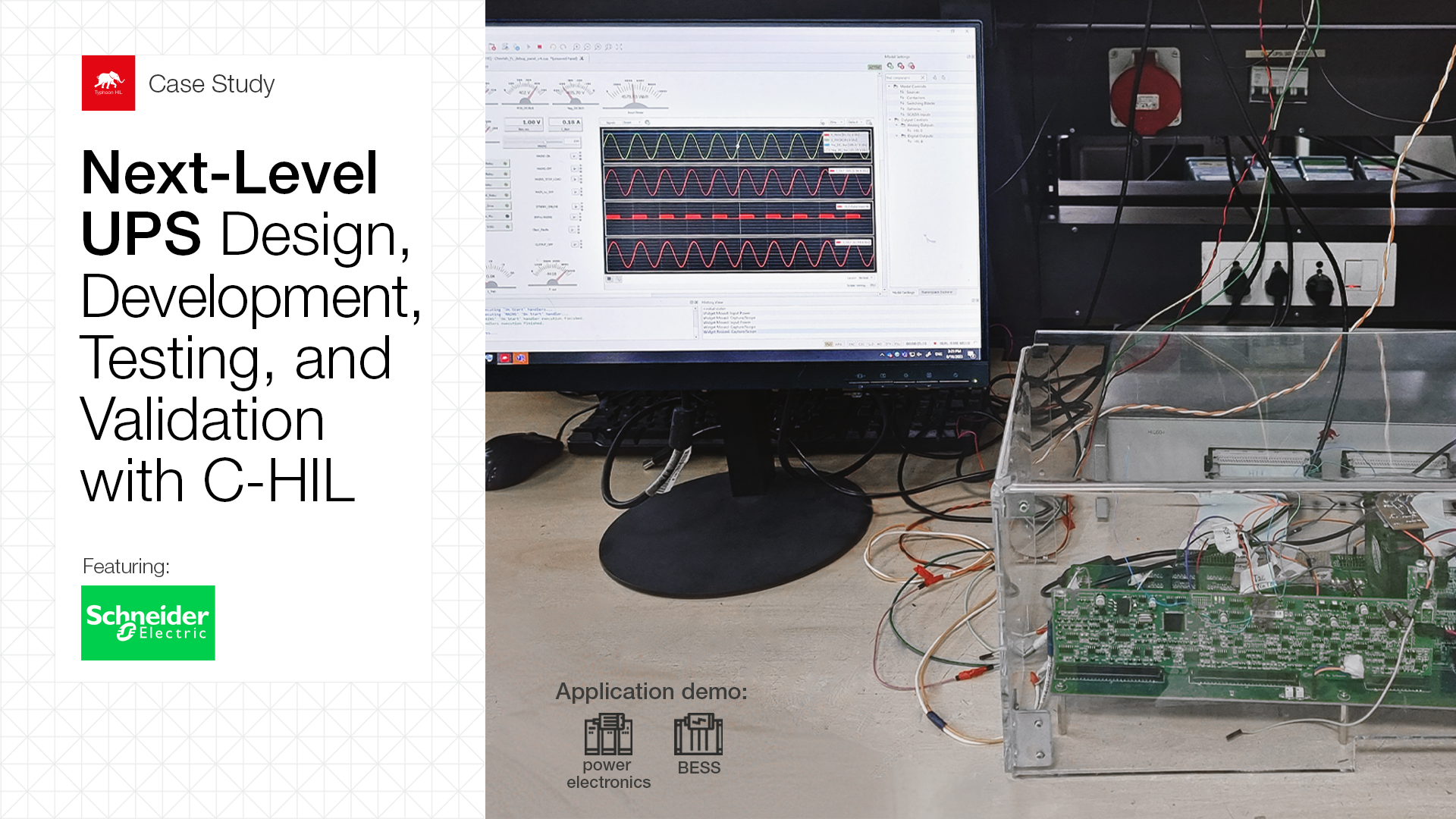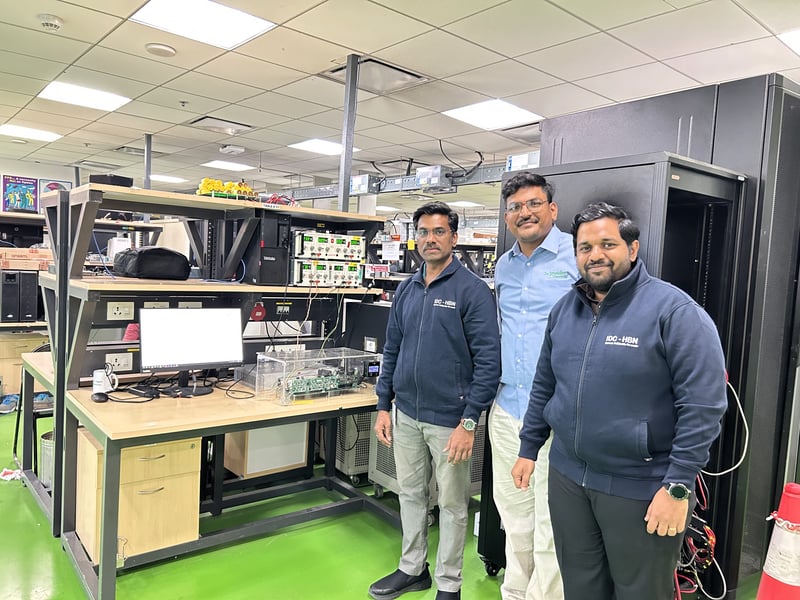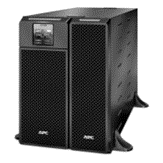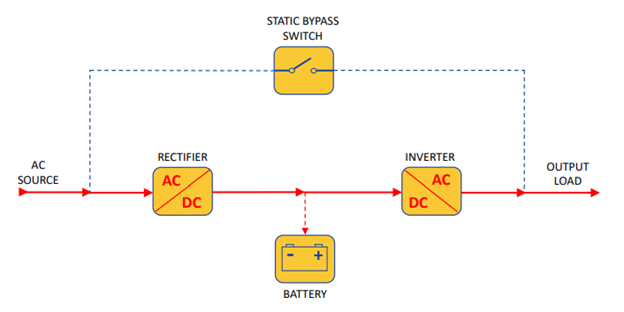
This blog article is covering the story from the Schneider Electric Smart UPS Online C-HIL Core Team, where they outline the primary obstacles usually encountered in UPS design, development, and testing, as well as what a C-HIL setup brings when it comes to UPS testing. They shared what HIL benefits did the Schneider Electric Single-Phase UPS Team experienced first-hand and how the real time C-HIL solutions are supporting their mission towards automation and digitalization.
Introduction | Meet the team.
This C-HIL user story is coming from the Schneider Electric Smart UPS Online C-HIL Core team. At Schneider Electric India, their team of expert professionals is continuously developing a wide range of smart UPS systems with the aim to meet all the needs and requirements of UPS users.
Sivamani Kukunuri is the Power Electronics Team lead, passionate about practicing and establishing new ways of design and development methods and practices for power conversion products. Shivaprasad Ellendula is the team’s Embedded Power Conversion Control Firmware Expert, passionate about digitization, automation, and DevOps. Sanjay Kandula is the Power Electronic Senior Hardware Designer in the team, passionate about power and control modelling of various power electronics topologies. See below a group photo of the team in the lab where they develop and test new products.

Figure 1. Sivamani Kukunuri, Shivaprasad Ellendula, and Sanjay Kandula (from left to right) from the Schneider Electric Smart UPS Online C-HIL Core team of the IDC-HBN division.
Challenges | The key difficulties that UPS manufacturers confront while developing, testing, validating of UPS units.
The Schneider Electric Smart UPS Portfolio has multiple power options, ranging from 1 to 20kVA including standalone as well as modular ranges. A Typical UPS integrates various power conversion sub-systems to ensure reliable power delivery, including a PFC circuit, inverter, and various DC-DC converters. Figure 2 shows a 6 KVA UPS from Schneider.

Figure 2. SRT6KXLI by Schneider Electric.
Each converter presents challenges in design, component selection, and control algorithms. Additionally, seamless integration of all converters in the UPS system requires careful synchronization, fault handling, and coordination to ensure uninterrupted and reliable power supply.
 Figure 3. The Smart UPS Online UPS Block Diagram [Image source].
Figure 3. The Smart UPS Online UPS Block Diagram [Image source].
Following are the two key challenges encountered during the UPS life cycle:
- Early unavailability of physical electronic boards for new product development:
UPS is extremely electro-firmware dependable, and the verification of UPS sub-systems relies on physical hardware that consists of power electronics components and digital controller PCBs. The unavailability of a physical powertrain, target controller boards, AC/DC sources and loads in early development poses potentially significant delays in developing and testing the new topologies and associated firmware development. This delay can lead to significantly longer product development cycle times. - Delays in addressing field issues during the continuous engineering life cycle:
Challenges emerge during the continuous engineering phases, primarily due to the need of complex test infrastructure for reproducing field issues and subsequent multiple firmware releases. Efficient issue debugging and swift delivery of hardware and/or firmware updates are extremely critical to retain customer satisfaction.
Solution | The HIL setup configuration and testing procedures used.
Initially, the Schneider team started the journey with Controller Hardware-in-the-Loop (C-HIL) infrastructure applied in the continuous engineering phase. C-HIL testing procedures offer significant benefits in overcoming challenges related to firmware debugging, design validation, and firmware regression in UPS design and development. As shown in Figure 3, they have integrated their actual controller with HIL using an interface board. The power plant model is run in the HIL device while the control plant model in run on an actual controller, providing an accurate representation of the UPS system. This setup facilitates efficient firmware debugging, allowing engineers to identify and resolve issues promptly.
.jpg?width=4000&height=3000&name=HIL%20setup%20(1).jpg)
Figure 4. The UPS test setup using HIL.
The team later on started leveraging C-HIL in quick evaluation of new Topologies (PoC) and associated hardware/firmware development to strengthen the technical road map. Typically, acquiring the physical boards for a given power train complexity takes around 8 to 10 weeks. However, C-HIL technology reduces the bring-up time to within a week or two, thus enabling faster stabilization of power toplogy and firmware.
.png?width=4032&height=3024&name=HIL%20in%20action%20(1).png)
Figure 5. The UPS HIL test setup in action.
Benefits | Implementation of C-HIL for UPS design and development at Schneider Electric.
As the team at Schneider Electric thoroughly enjoyed their C-HIL journey, they are sharing several key benefits that they witnessed from first-hand experience:
- Continuous Engineering:
- Using traditional testing methods, verifying the UPS state machine takes over three weeks. Alternatively, employing an HIL automation tool completes the same verification test in just 10 hours in a safe environment.
- Vertically Integrated Toolchain:
- Adopted System Level Modeling with Virtual Hardware-in-the-Loop using the vertically integrated Typhoon toolchain ensures seamless development and testing.
- This enables seamless transfer of V-HIL models to C-HIL, streamlining firmware development, validation, verification, rigorous test regressions, and efficient field issue debugging.
- New Product Development and New Topology (PoC) assessment:
- Leveraging the powerful in-built Virtual-HIL for system level modelling is truly beneficial with respect to early design assessment wherein offline simulations are extremely helpful for device and topology selection.
- Hardware-in-the-Loop testing verifies UPS performance for pre-compliance with industry standards like IEC 61000-3-11, ensuring effectiveness under various conditions.
- Sustainability and Digitalization:
- C-HIL promotes sustainability through digitalization by simulating components and systems, reducing physical testing, minimizing carbon emissions, enabling faster and safer design optimization, and reducing the need for multiple iterations and manufacturing emissions.
HIL in One Word | How would you describe your experience with HIL?
“ Typhoon HIL is pioneering a future-proof and ultra safe power conversion development ecosystem.
Sivamani Kukunuri
Power Electronics Team Lead
Schneider Electric
“ Firmware first, hardware later: powering up your real-time model from day one!
Shivaprasad Ellendula
Embedded Power Conversion Control Firmware Expert
Schneider Electric
“ Hardware-in-the-loop: where innovation meets ignition in the realm of power electronics product development, sparking a game-changing revolution.
Sanjay Kandula
Power Electronic Senior Hardware Designer
Schneider Electric
Are you exploring adopting HIL in your work?

Are you interested in more stories like this?
Credits:
Text | Sivamani Kukunuri, Shivaprasad Ellendula, Sanjay Kandula
Visuals | Karl Mickei
Editor | Debora Santo



